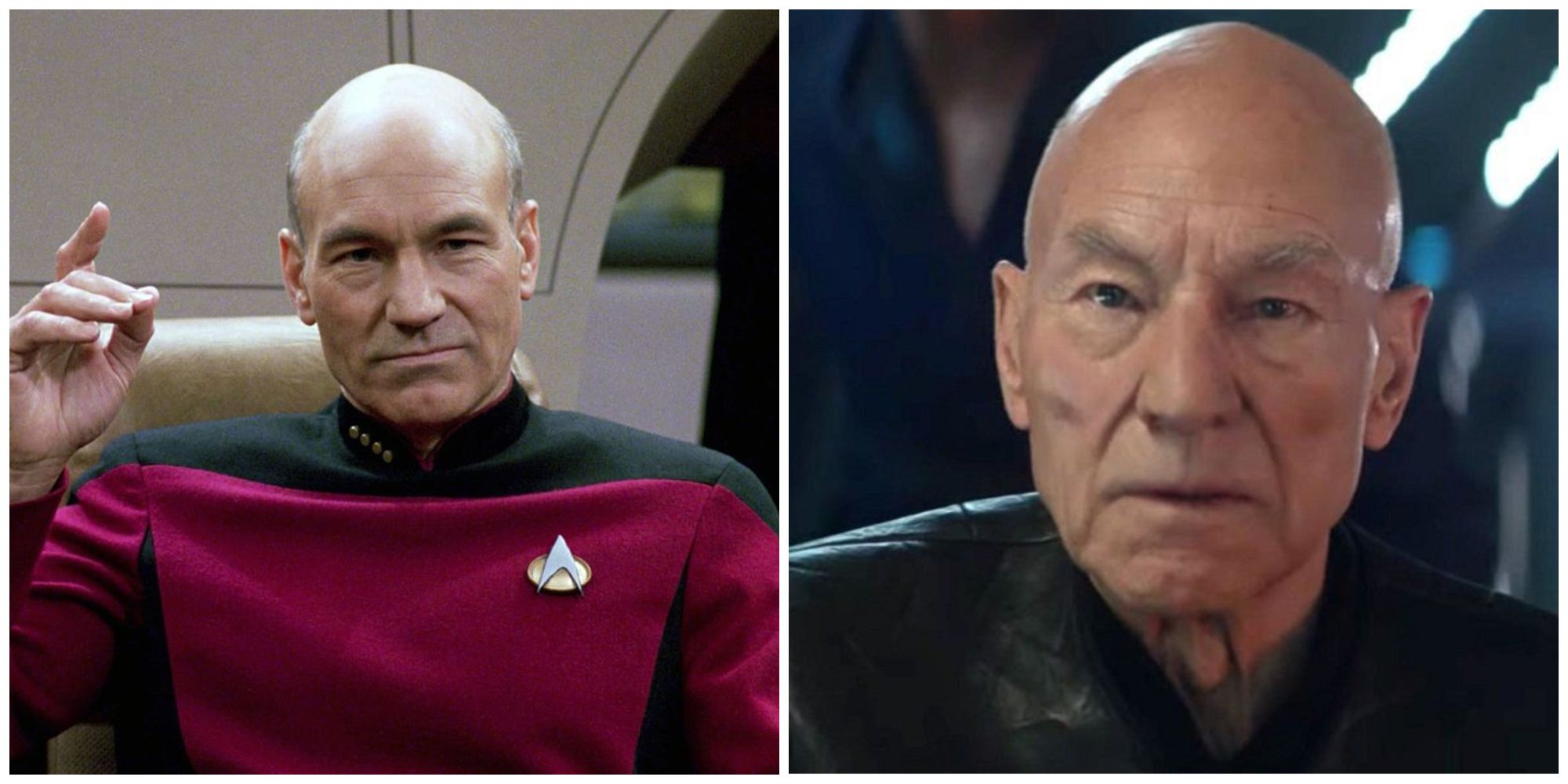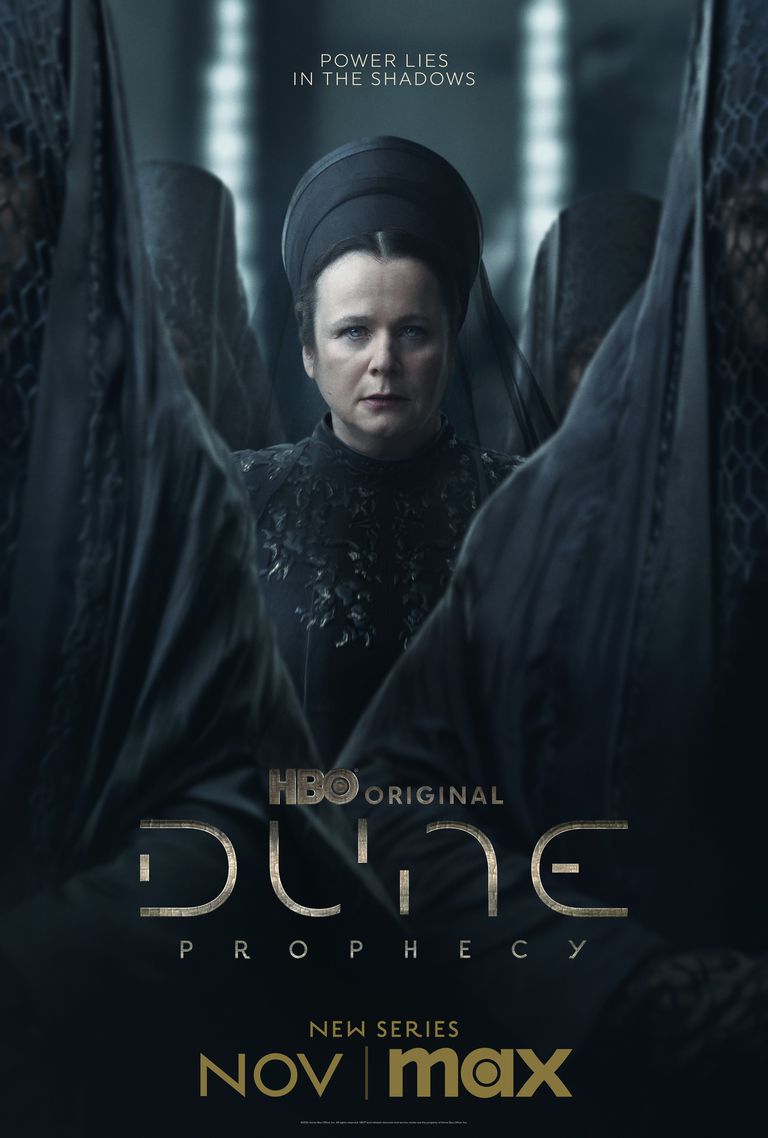Key Takeaways
- Dune: Prophecy introduces a prophecy, Tiran-Arafel, foretelling the destruction of the Sisterhood by an unknown tyrant.
- Similar to Star Trek: Picard, both series feature secretive groups of women with special abilities trying to prevent catastrophe.
- As both series unfold, it is evident that prophecies play a crucial role in shaping the storylines and highlighting the struggles ahead.
HBO’s Dune prequel series Dune: Prophecy is shaping up to be an interesting expansion of Frank Herbert’s universe brought to the screen in Denis Villeneuve’s two films. Yet, it does have some familiar elements. Palace intrigue, characters jockeying for power, and portents of apocalyptic doom have all become hallmarks of recent sci-fi and fantasy stories. However, one element of Dune: Prophecy’s story in particular bears a striking similarity to a plot point from a different brand-extending series.
That series is Star Trek: Picard, the legacy sequel series from Paramount+ that sends beloved starship captain Jean Luc Picard on a few more late-in-life adventures. In particular, an element of its first season stands out as reminiscent of the events that set the plot of Dune: Prophecy in motion. It all has to do with that aforementioned apocalyptic vision.

Related
Star Trek Picard: 9 Things About Picard The Show Changes From The Next Generation
Jean-Luc Picard has grown older since the days of TNG, and his character in Picard isn’t the exact same man who once captained the Enterprise.
Dune: Prophecy’s ‘Burning Truth’
In the lengthy voiceover in the first episode of Dune: Prophecy,Valya Harkonnen (Emily Watson) is poised to take over as leader of the Sisterhood of Truthsayers, the network of royal advisers and hidden hands of power that will one day become the Bene Gesserit. Then, their first Mother Superior dies. But before her death, the Mother Superior gives Valya a terrifying vision that could spell the end of their order many years down the line.
This prophecy, known as Tiran-Arafel, foreshadows the destruction of the Sisterhood at the hands of an as-yet unknown tyrant. This prompts Valya, who seizes power through violent means, to do whatever it takes to secure the order’s future, carrying on a controversial program to selectively breed future leaders who will be easy to control.

Related
Dune: Prophecy Cast Talks Telling a Bene Gesserit Origin Story
HBO series Dune: Prophecy puts women in the spotlight with its focus on the origins of the mysterious Bene Gesserit order.
30 years later, it seems that this prophecy might finally be beginning in earnest. The Sisterhood is on the verge of cementing their power by putting one of their own on the throne, orchestrating a marriage between Truthsayer-in-training Ynez (Sarah-Sofie Boussnina) and the underage son of a powerful Duke and key military ally to the Emperor. All seems to be going well, until the Emperor’s Truthsayer Kasha (Jihae) has a terrifying vision on the eve of the wedding. This vision portends all kinds of calamity if the ceremony is carried out.
Kasha is so rattled that she goes to the Sisterhood’s home world to try to convince Valya and her sister Tula (Olivia Williams) not to go through with the wedding out of fear of those dire consequences. But there’s too much at stake to back out now, and Valya refuses to heed Kasha’s warnings. Before long, Kasha mysteriously burns to death from the inside out, which seems like a good sign she might have been on to something.
Dune: Prophecy’s Picard Connection
The prophecy of Tiran-Arafel and the Sisterhood’s efforts to prevent it brings to mind another shared vision of destruction: that of the Ganmadan, a Romulan doomsday brought about by synthetic life forms. Much like the Sisterhood, this prophecy is also guarded by a secretive group of female seers, an organization called the Zhat Vash, who have made it their mission to prevent this outcome. The vision is so frightening that some more fragile minds can’t handle it. While the Sisterhood is plenty secretive, they still have a public face as advisers to nobility across the galaxy. On the other hand, the Zhat Vash operate completely in the shadows, their existence merely whispered about for many years until Picard uncovers their machinations.
Both prophecies hinge on a single destructive force. In the Ganmadan’s case, it is a synthetic named Soji who is believed to be “The Destroyer” who will raise an army to overthrow organic civilization. The Zhat Vash are so terrified by what they’ve seen that they’re willing to orchestrate a fake synthetic uprising to instill fear in the inorganic life forms. While many of the details of Tiran-Arafel are still coming into focus, it seems that their vision might have a destroyer of its own in the form of Desmond Hart, a former soldier who miraculously survived a Sandworm attack on Arrakis that seemed to leave him with some strange abilities. Time will tell if Desmond’s transformation is related to the prophecy or not, but his presence rattles the usually unflappable Valya.
Given that the audience is aware that the Sisterhood will eventually become the Bene Gesserit, there’s little worry that they’ll be wiped out completely. Still, their order is likely in for some dark times and a difficult battle ahead.
None of this is to say that Dune: Prophecy copied Picard, or the other way around. Sci-fi is a genre full of established tropes that creators love to remix in new and distinct ways, and Dune has always been a series full of prophecies and portents. But it is interesting that two recent series, both of them extensions of a previously established world, use the same conceit — a secret society of women with special abilities trying to prevent a cataclysm — to put their stories in motion.















Leave a Reply